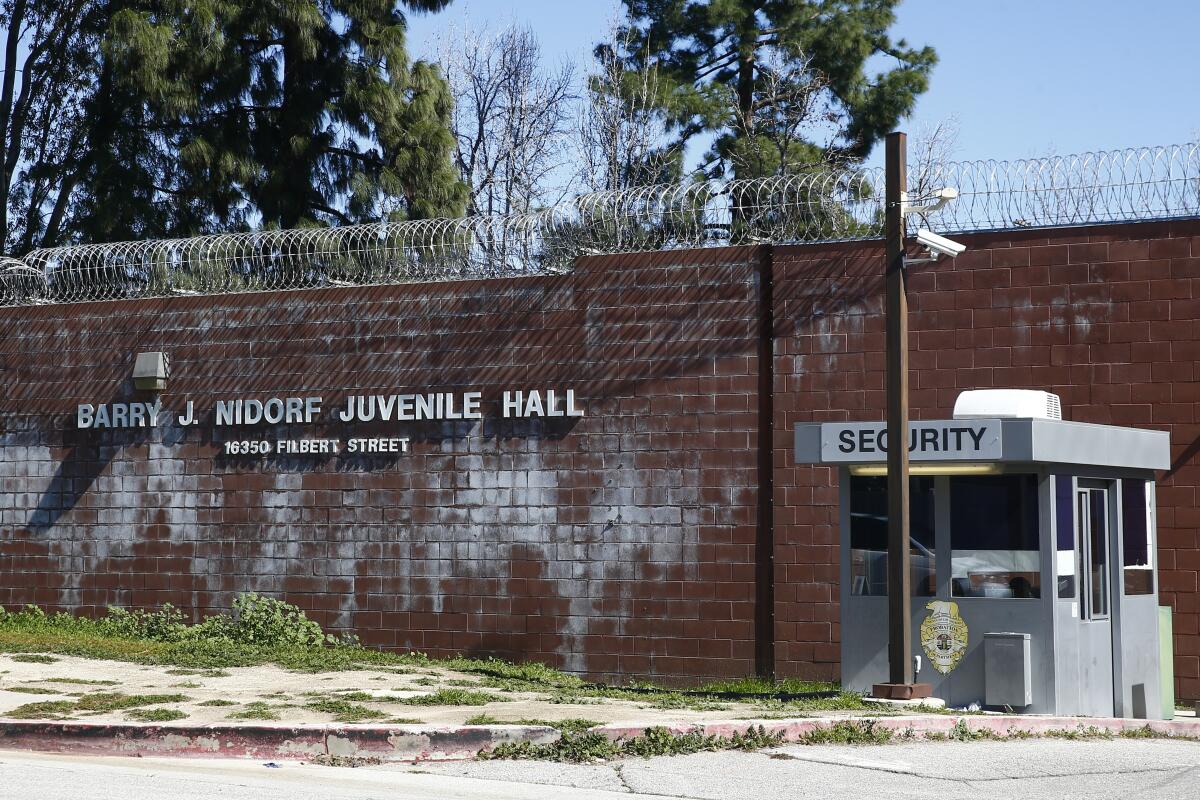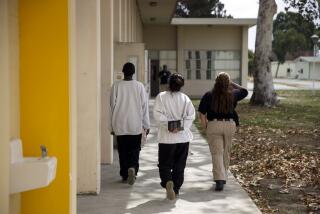L.A. County got $88 million to rehabilitate young people. Most of it hasn’t been spent

The Los Angeles County Probation Department has spent only $9.7 million of $88 million in grant money it has received since 2021 to rehabilitate young people who committed serious crimes, a state audit has found.
The main reason behind the sluggish spending: the county has not yet created many of the programs the state grants were intended for, including job training, gang intervention and rehabilitative services for sex offenders, according to the report released Tuesday by the California State Auditor.
L.A. county probation officials said the auditors didn’t have a full accounting of the money spent this last fiscal year, which they expect would amount to a “substantially higher” sum. And many new programs are about to pop up, they said.
“We anticipate a nimble future for service ramp-up,” the probation department stated in its formal response to the audit.
In 2021, as California moved to shut down its notoriously violent youth prison system, the state began to funnel millions of dollars to counties to pay for services for the young people who would be moving into their facilities.
The $88-million figure in the state audit dates from when the county started receiving the money in 2021 through June of this year.
Many of the young people who commit serious crimes such as murder in L.A. County are now confined within a secure section of Sylmar’s Barry J. Nidorf Juvenile Hall, which houses about 65 youths. An additional 21 young people are at Campus Kilpatrick in Malibu.
Nidorf, in particular, has had a troubled few years, including a fatal overdose and assaults while repeatedly being dinged by regulators for offering few activities for the youths incarcerated there.
Scott Budnick, a member of a state board that oversees correctional facilities, said he has noticed programming start to beef up recently at Nidorf, though he says teens still spend an “outrageous amount of time just sitting in units playing video games, watching TV.”
“There was a huge lack of programming for the first two to three years. Now they’re starting to bring things online,” said Budnick, who mentors young people at Kilpatrick and Nidorf. “I don’t know why it’s taken three years.”
Tuesday’s report details a few reasons. With some cities reluctant to have youths transferred from state prisons to facilities within their borders, L.A. County struggled to figure out where to put the youths. It took more time — more than two years — to decide what programs to spend the money on.
Eduardo Mundo, head of the Probation Oversight Commission, said the delay is hardly surprising, given the complexities of allotting government contracts and the fact that the county was starting from scratch with the influx of youths from the state system.
“If you didn’t expect this to happen, you weren’t really thinking,” he said.
Even spending money on existing programs has sometimes proved difficult for the county. A popular program that sends formerly incarcerated mentors into juvenile facilities was given $10 million last fiscal year by a county committee formed to allocate the state money.
In the first three-quarters of that fiscal year, the department had spent less than half a million on the mentoring program, the state audit found.
One bright spot for the county: the money’s not “use it or lose it.” The state has set no expiration date, so the county can let funds pile up — though some say that would be ill-advised.
“Going forward, it’s inexcusable that the money doesn’t start getting spent quicker,” Mundo said.
More to Read
Sign up for Essential California
The most important California stories and recommendations in your inbox every morning.
You may occasionally receive promotional content from the Los Angeles Times.







